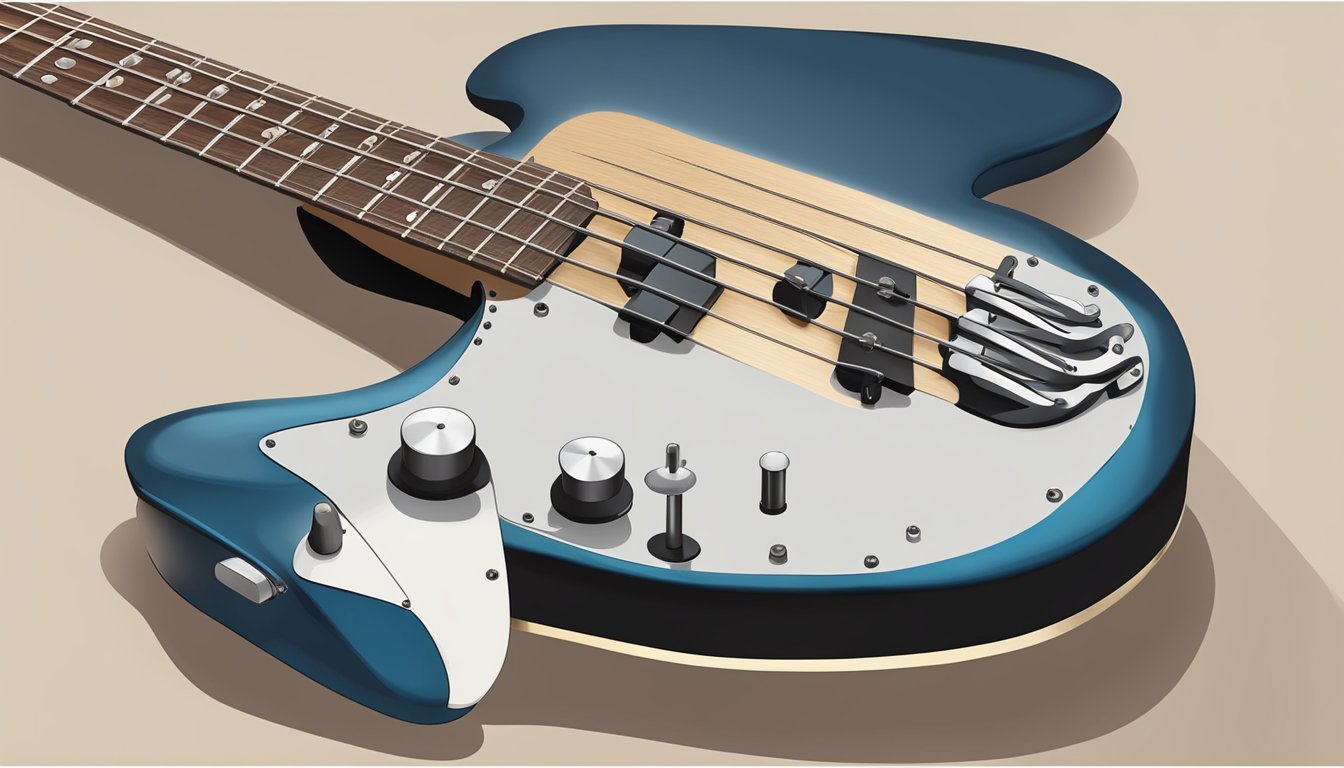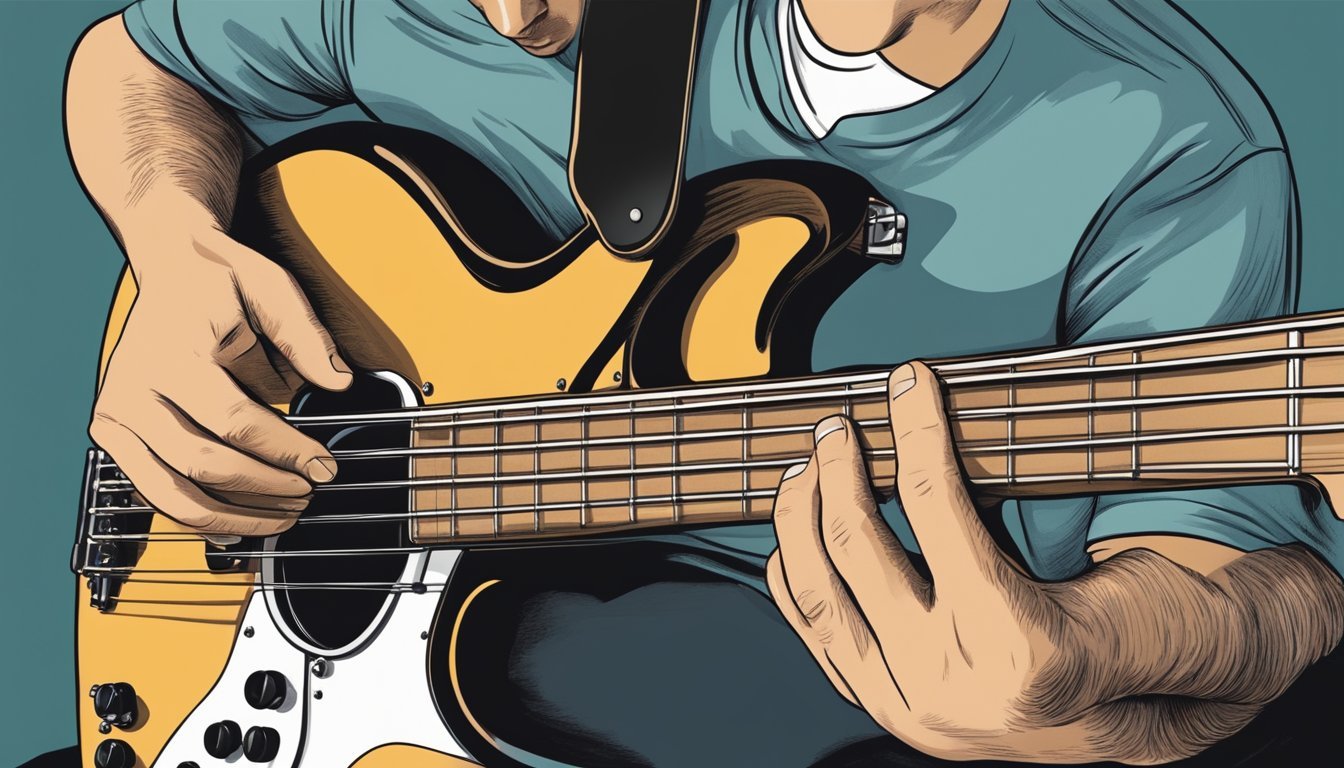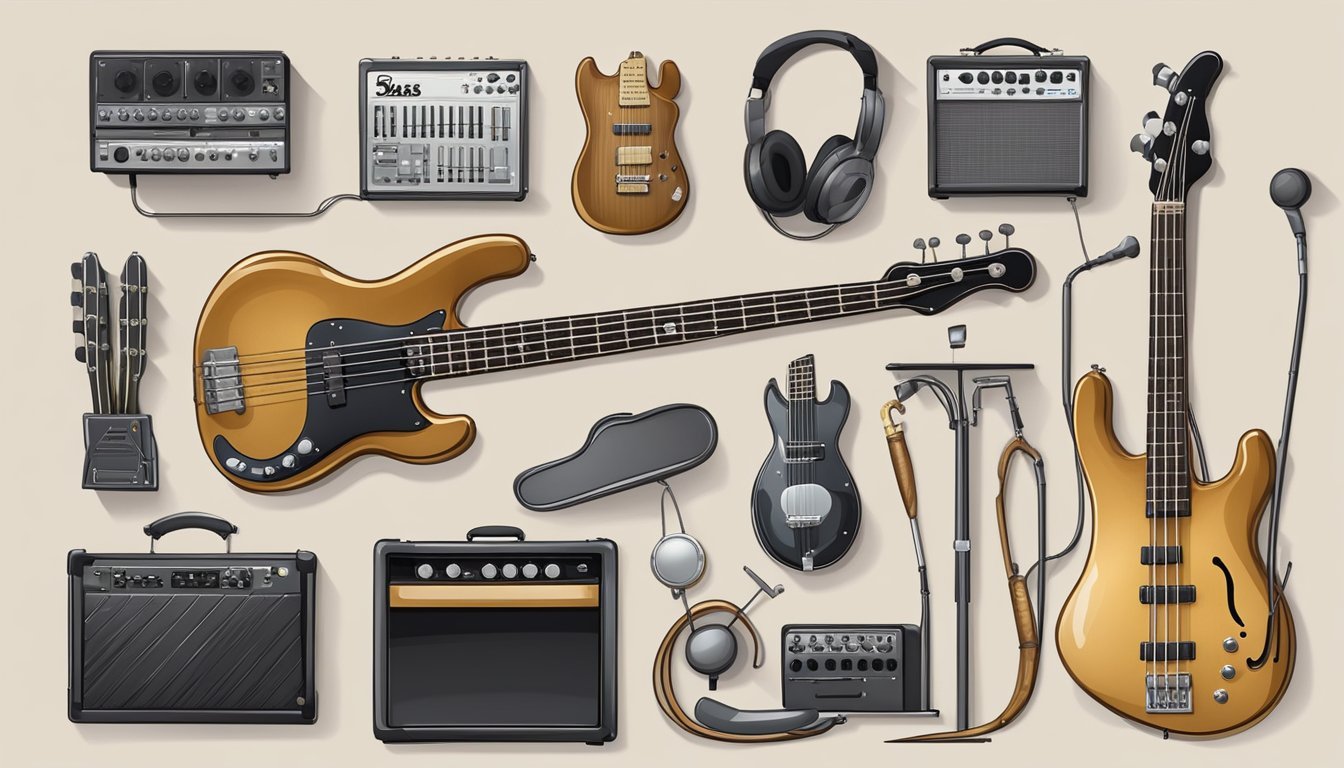When you think of a bass guitar, the first thing that probably comes to mind is its unique sound and rhythm that anchors the band.
A standard bass guitar has four strings, but you can also find models with five, six, or even more strings.
Each string adds different ranges and tones, making it possible for players to explore various styles and techniques.

Whether you’re just starting out or looking to expand your collection, understanding the number of strings on a bass can help you make better choices.
You’ll discover how different string setups can enhance your playing experience and influence the kind of music you play.
Exploring the range of bass guitars can open up a world of musical possibilities.
No matter what style you’re into, there’s a bass configuration that can suit your needs perfectly.
Key Takeaways
- Standard bass guitars typically have four strings.
- You can find bass guitars with various string numbers for different sounds.
- The number of strings affects how you play and the music you create.
Basics of the Bass Guitar

The bass guitar is a key instrument in many music styles.
Understanding its structure and string configurations can enhance your playing experience.
Anatomy of the Bass Guitar
A bass guitar typically features a long neck, a body, and four to six strings.
Main Parts Include:
- Body: This is the large part that you hold. It amplifies sound.
- Neck: The neck is where you press down the strings to create different notes.
- Headstock: At the end of the neck, this is where the tuning pegs are located. You adjust these to tune your bass.
- Frets: The metal lines on the neck show you where to place your fingers for different notes.
Most basses come in four-string versions, usually tuned to E, A, D, G. For more range, you can find five-string basses which add a lower B string or six-string basses that include both a low B and a high C string.
Standard Bass Guitar Strings Configuration
When it comes to the standard configuration, the four-string bass is most common.
Each string is tuned to a specific note:
- E1 (lowest)
- A1
- D2
- G2 (highest)
For players wanting extended range, the five-string bass often includes a low B, resulting in B, E, A, D, G tuning.
The six-string bass goes even further, typically tuned to B, E, A, D, G, C. This variety allows for flexibility in playing styles and genres.
When selecting strings, consider gauge and material.
Thicker strings create a deeper sound, while lighter ones are easier to play.
Playing and Techniques

When you play bass guitar, your style and techniques can really shape your sound.
This section talks about different playing styles and how the number of strings affects playability.
Playing Styles and Techniques
You have several options when it comes to playing bass guitar.
Common styles include fingerpicking, slap bass, and using a pick.
Each of these techniques offers a unique sound and feel, allowing you to express your creativity in different ways.
For those just starting out, it’s essential to familiarize yourself with bass guitar basics for beginners, which include understanding the fretboard, practicing scales, and developing proper finger positioning.
Once you have a solid grasp of these fundamentals, you can begin exploring various playing styles and find the one that resonates with you the most.
- Fingerpicking is popular for its versatility. You can pluck the strings with your fingers to create a warm, organic sound.
- Slap bass gives a sharp, funky vibe. It involves hitting the strings with your thumb and pulling them with your fingers. This technique is great for keeping the rhythm lively.
- Using a pick offers a brighter, more aggressive sound. It’s often easier for quick notes and heavy chords.
Experimenting with these styles can help you find what feels right for you.
Impact of String Configuration on Playability
The number of strings on your bass guitar can greatly affect how you play.
Most bassists use a 4 or 5-string setup.
- A 4-string bass is often easier for beginners. It’s tuned like the lowest four strings of a guitar, making it straightforward to learn.
- A 5-string bass adds a lower B string, which expands your range. This can be useful for playing deeper notes.
- Fretless basses remove the frets, allowing for smooth glissando effects. This style requires more precision but offers unique sounds.
Choosing the right string configuration can enhance your playability and fit your playing style.
Variations and Customizations

Bass guitars come in many styles to fit different playing needs.
You can customize your bass with extra strings or special tunings.
Let’s look at some popular options.
Extended Range and Specialty Bass Guitars
Extended-range bass guitars are great for players who want more notes at their fingertips.
You might see five-string basses, which add a low B string, giving you deeper bass notes.
This can enrich your sound and help in genres like jazz and metal.
If you’re feeling adventurous, consider an eight-string bass.
These typically have four pairs of strings, often tuned in octaves.
This gives your music a lush, full sound but can be challenging to play.
In short, more strings mean more versatility in your playing style.
Alternate Tunings and Custom Setups
Alternate tunings are another way to make your bass unique.
While standard tuning is E-A-D-G, you could try tuning down to C-G-D-A for a deeper sound or even experimenting with a higher tuning like E-A-D-G-C.
These changes can suit different musical styles or personal preferences.
You may also customize your setup with different string gauges.
Thicker strings can provide a heavier sound, while lighter strings can make playing easier.
Experimenting with these options can help you find your perfect tone and make your playing more enjoyable.
Bass Guitar in Music
The bass guitar plays a crucial part in many music styles.
You’ll find it shaping the groove in songs, making the rhythm section feel solid.
From rock to funk, the bass provides both melody and harmony, complementing other instruments.
Genres and Bass Guitar
In rock music, the bass guitar drives the beat, connecting the drums and guitar.
Think iconic bands like The Beatles or Led Zeppelin, where the bass creates a robust foundation.
Funk music showcases the bass guitar’s ability to groove.
Players like Bootsy Collins use slap techniques that give a bright, punchy sound, making you want to dance.
In jazz, the bass adds depth and is often played in a walking style, providing a smooth flow to the harmonic changes.
Famous Bassists and Their Influence
Many bass players have left their mark on music history.
For example, Jaco Pastorius revolutionized the instrument with his jazz-fusion style, bringing a melodic approach to the bass.
His unique fingerpicking technique showcased the instrument’s potential beyond just rhythm.
Another influential figure is Flea from the Red Hot Chili Peppers.
He blends rock and funk, pushing boundaries and inspiring countless musicians.
These bassists demonstrate how the bass guitar can elevate music, engaging listeners and enriching the sound.
They show that bass players are essential to any band, often being the glue that holds everything together.
Frequently Asked Questions
You might have some questions about bass guitars, especially regarding string count.
Let’s dive into these common queries to give you a clearer picture about choosing the right bass for you.
Is a 4-string bass enough to start with, or should I aim for more?
Starting with a 4-string bass is a smart choice for many beginners.
It covers most styles of music and helps you learn the basics without feeling overwhelmed.
As you get comfortable, you can explore other options if you want.
What’s the scoop on 5-string basses—are they much trickier to play?
5-string basses add an extra low string, usually a B. This can expand your range and give you more options in your playing.
However, it may take some time to adjust if you’re used to 4 strings, but many find it worth the effort eventually.
Do some bassists really rock out on 6 strings?
Yes, some bassists use 6-string basses.
They often feature even more range, allowing for complex playing styles.
While they can seem tricky, many players enjoy the freedom they provide once they get the hang of it.
Between bass and guitar, which one’s easier for a newbie?
It often comes down to personal preference.
Some find bass easier to start with because it typically has fewer strings and plays simpler rhythms.
Others might prefer the guitar’s versatility.
You should try both to see which feels more comfortable.
Why might someone choose a bass with more than 4 strings?
Many musicians opt for more than 4 strings to access different ranges of notes and enhance their creativity.
A 5 or 6-string bass opens up new possibilities for playing styles and genres, making it a great choice for those looking to explore more musically.
How does the number of strings on a bass affect its sound?
The number of strings can change the sound and playability of a bass.
For example, a 4-string bass has a classic, deep tone.
Meanwhile, a 5-string adds a lower B string, giving you more depth.
Each extra string adds another dimension to your sound and playing style.

